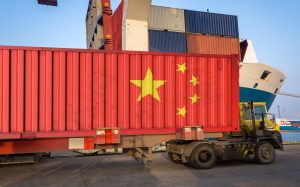In 2018, China’s Ministry of Industry and Information Technology (MIIT) defined China’s “little giants” (小巨人) as companies with an annual revenue of 100-400 million yuan (roughly $14 million to $56 million), annual profit growth of at least 10 percent, R&D or innovation staff accounting for more than 15 percent of their total workforce, and at least five innovation patents related to products or 15 design patents.
China’s 14th Five-Year Plan (2021-2025) clearly stated the goal to “promote the increase of professional advantages by SMEs and cultivate specialized and new ‘little giant’ enterprises and single- product champion (单项冠军) enterprises in the manufacturing industry.” The target of 10,000 little giants set by the 14th Five-Year Plan has already been attained; as per media reports at the end July 2024, China’s push to promote small and medium enterprises (SMEs) for technology advancement and new product development resulted in the creation of 140,000 SMEs with 12,000 of those being little giants.
China’s little giants are found in all the industrial categories in the U.N. Industrial Classification and are forming a key part of supply chains. 90 percent of these little giants cater to the requirements of big firms, locally and globally.
The strategy of supporting little giants is in sync with China’s Made in China 2025 campaign. Policy implementation is evident, with little giants receiving incentives both from the central and provincial governments. The central government created an exclusive package of 10 billion yuan for 1,000 little giants during the 14th Five-Year Plan.
Beijing’s reactions to supply chain shifts away from China – dubbed “de-risking” by the United States and European Union – can be gauged from the highlights of its state media reports. There is a repetitive insistence that China’s manufacturing remains insulated from the global headwinds and small shifts in labor intensive sectors, with the caveat that the firms still need to import intermediate parts from China. Often, these intermediate parts are made not by China’s global champions, by the its little giants.
Amid growing technology frictions with the United States and an increasing trade war with more trading partners such as the EU, China’s strategy of supporting little giants seems to be yielding results. As flagged by Xinhua in September 2023, select little giants are also contributing to reducing China’s need for imports in niche segments.
For example, Guangxi Crystal Union Photoelectric Material is involved with mass production of indium tin oxide (ITO), which is a key technology in smartphone display screens. Despite Guangxi being rich in indium tin, domestic manufacturers were importing the coating, which is way more expensive than the raw material. Based on U.N. COMTRADE data, China’s imports of ITO from the world fell by 22 percent in 2023, with the import value dropping from $53.5 million in 2022 to $41.5 million in 2023. China’s reduced imports of ITO from its four major import sources, including Japan (a drop of 48 percent), South Korea (a drop of 15 percent), Malaysia (a drop of 7 percent) and Brazil (a drop of 26 percent). Interestingly, China’s fifth largest import source of ITO in 2023 was Russia, which actually saw a sharp increase in import value – from a meager $2,000 in 2022 to $2.1 million worth of ITO sold to China.
This case speaks volumes about China’s diversification strategy. It illustrates both the success of China’s little giants in reducing overall import reliance on intermediate materials, while also showcasing China’s own “de-risking” to rely on friendlier partners like Russia.
Other successful examples of little giants working their way into China’s critical supply chains include PhaBuilder (which makes microbes used to produce industrial raw materials), Acoinfo (which specializes in industrial real operating systems), and Beijing Hanfei Aviation Technology (which produces single crystal turbine blades).
Besides building China’s domestic manufacturing capabilities to safeguard against growing external technology frictions, China’s little giants’ going global is an important trend to be watched out for. In June 2024, PhaBuilder collaborated with Solenis (headquartered in the United States) and Hengxin on green innovation. With such collaborations of China’s little giants across the globe, the complex global supply chains are expected to include the presence of these smaller firms for a long time to come. While foreign governments focus their attention on China’s state-owned behemoths, they shouldn’t overlook its “little giants.”
































